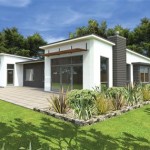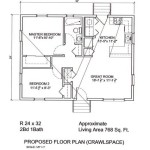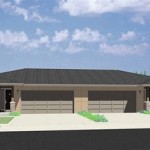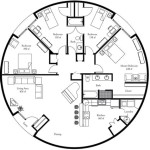Open To Below Floor Plans: Creating Spacious and Light-Filled Interiors
Open to below floor plans have gained popularity in recent years, offering a sense of openness, grandeur, and abundant natural light. These designs feature double-height spaces, often connecting the living room and mezzanine or loft above. By removing the traditional ceiling, architects create a seamless transition between levels, encompassing a vast and airy atmosphere.
Open to below floor plans are particularly suited for modern and contemporary architectural styles, emphasizing natural light and open spaces. They allow for a fluid flow of movement and uninterrupted sightlines, creating a sense of spaciousness even in smaller homes. Additionally, the elimination of physical barriers fosters a better connection and communication between family members or guests.
Incorporating an open to below design requires careful consideration and planning. One crucial aspect is ensuring ample natural lighting. Large windows, skylights, and voids allow daylight to penetrate deep into the space, reducing the need for artificial lighting during the day. Architects often place the open to below area adjacent to an outdoor space, such as a terrace or garden, to further enhance the connection with nature.
Another consideration is acoustics. The absence of a ceiling can lead to reverberation and noise issues. To mitigate this, architects employ various strategies, such as incorporating sound-absorbing materials into the design, installing carpeting or rugs, and using furniture to break up the open space. Additionally, careful placement of windows and other openings can help control airflow, which can reduce noise levels.
When designing open to below floor plans, architects pay meticulous attention to the choice of materials and finishes. The use of contrasting textures, colors, and patterns can help define different areas within the space and create visual interest. For example, a polished concrete floor in the living room might be complemented by a wooden mezzanine, creating a subtle distinction between the two levels.
Open to below floor plans offer numerous benefits, including:
- Increased sense of spaciousness and grandeur
- Abundant natural light, reducing energy consumption
- Uninterrupted sightlines and seamless transitions between levels
- Improved communication and connection within the home
While open to below floor plans are undoubtedly striking, they may not be suitable for everyone. Families with young children or those who prefer more traditional and cozy spaces might find them less appealing. Furthermore, the cost of implementing such designs can be higher than traditional floor plans due to the need for additional structural support and specialized materials.
If you are considering an open to below floor plan for your home, it is essential to consult with an experienced architect or designer. They can guide you through the design process, address potential challenges, and ensure that the final plan meets your specific needs and preferences.

Sarah Dramatic Open To Below Two Y House Pinoy Eplans Story Plans

Sarah Dramatic Open To Below Two Y House Pinoy Eplans Story Design Plans

Open To Below Design Features Are Always A Favorite In Any Residential Matthew S Four Bedroom Layout House Plans Modern

The 11 Best New House Designs With Open Floor Plans Houseplans Blog Com

How To Read And Understand A Floor Plan Activa

How To Read A Floor Plan With Dimensions Houseplans Blog Com

Alfredo Dramatic Open To Below 5 Bedroom Contemporary Pinoy House Designs Design

2c 550 Ultra Lofts

Beautiful Two Story 5 Bedroom Farm House Style Plan 7071

How To Read A Floor Plan With Dimensions Houseplans Blog Com








